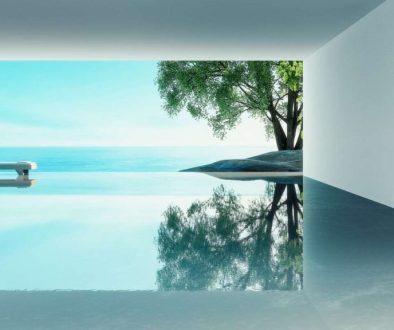Why Green Buildings Are the Future of Commercial Real Estate
Why Green Buildings Are the Future of Commercial Real Estate
Green buildings represent a revolutionary shift in the commercial real estate sector, prioritizing environmental sustainability while enhancing operational efficiency. This blog post explores the numerous benefits of green buildings, their impact on the real estate market, and why they are increasingly becoming the preferred choice for investors and businesses alike.
Why Green Buildings Are the Future of Commercial Real Estate
The concept of green buildings has gained significant traction in recent years, driven by an increasing awareness of climate change, resource depletion, and the overall need for sustainable practices. These structures are designed to reduce their environmental impact, promote energy efficiency, and create healthier living and working conditions. This post delves into the essential characteristics of green buildings, the financial and social benefits they offer, and the trends shaping their future in commercial real estate.
Introduction
As the world grapples with the effects of climate change and limited natural resources, the urgency for sustainable solutions becomes more pronounced. Green buildings have emerged as a beacon of hope in the commercial real estate sector, offering a pathway to a more sustainable future. These buildings are not just about being environmentally friendly; they also present significant economic advantages and enhance the quality of life for occupants. In this article, we will explore the fundamentals of green buildings, their myriad benefits, and why they represent the future of commercial real estate.
What Defines a Green Building?
- Green buildings are characterized by their sustainable design, construction, and operation. They aim to reduce energy consumption, minimize waste, and promote the use of renewable resources.
- According to the U.S. Green Building Council, a green building is a building that, in its design, construction, or operation, reduces or eliminates negative impacts and creates positive impacts on our climate and natural environment.
- Key features include improved energy efficiency, sustainable materials, water conservation systems, and indoor environmental quality that promotes health and comfort.
Many green buildings achieve certification through programs like LEED (Leadership in Energy and Environmental Design), which provides a framework for identifying and implementing practical and measurable green building design, construction, operations, and maintenance solutions.
Economic Benefits of Green Buildings
- One of the most compelling arguments for green buildings is their economic viability. Numerous studies have shown that these structures lead to substantial cost savings over time.
- Energy Efficiency: Green buildings utilize energy-efficient technologies such as LED lighting, high-efficiency HVAC systems, and smart building management systems. According to the World Green Building Council, buildings that meet green standards can reduce energy consumption by up to 30%.
- Lower Operating Costs: By reducing energy and water usage, green buildings significantly lower utility bills. A report by the U.S. General Services Administration indicated that green buildings have operating costs that are, on average, 20% lower than those of traditional buildings.
- Increased Property Value: Green buildings can command higher rents due to their sustainable features and lower operating costs. Research shows that LEED-certified buildings tend to have higher occupancy rates and rental prices compared to non-certified buildings. For instance, a study by CBRE revealed that LEED-certified office buildings have a rental premium of about 8-10%.
Environmental Impact and Sustainability
- Green buildings play a crucial role in promoting sustainability and reducing environmental degradation. They are designed to minimize resource use and create a healthier environment for occupants.
- Reduced Carbon Footprint: By utilizing renewable energy sources, such as solar panels and wind turbines, green buildings significantly lower greenhouse gas emissions. The American Institute of Architects estimates that green buildings can reduce carbon emissions by up to 50%.
- Waste Reduction: During construction, green buildings prioritize the use of recycled materials and focus on minimizing waste generation. This not only conserves resources but also reduces landfill use.
- Water Conservation: Implementing water-efficient fixtures and systems, such as rainwater harvesting and greywater recycling, helps conserve water. Green buildings can achieve water savings of up to 50% compared to traditional buildings.
Health and Well-Being of Occupants
- The well-being of occupants is a central focus of green building design. Improved indoor air quality, natural lighting, and access to green spaces are just a few of the ways these buildings contribute to healthier living conditions.
- Indoor Air Quality: Green buildings often incorporate materials that produce fewer volatile organic compounds (VOCs) and feature advanced ventilation systems that provide fresh air. Studies have shown that better indoor air quality can enhance productivity and reduce health issues among occupants.
- Natural Lighting and Biophilia: Maximizing natural light not only reduces reliance on artificial lighting but also enhances the mood and productivity of occupants. Biophilic design—integrating natural elements into the built environment—has been shown to improve mental well-being.
- Community Health: Green buildings often include shared spaces and promote walking and biking, encouraging a more active lifestyle and fostering a sense of community among occupants.
Market Trends and Consumer Demand
- The demand for green buildings is driven by various market trends, including changing consumer preferences and regulatory pressures.
- Increased Consumer Awareness: As public awareness of climate change grows, consumers are increasingly seeking environmentally friendly products and services. This shift extends to real estate, where buyers and tenants prefer spaces that reflect their values.
- Corporate Social Responsibility: Companies are recognizing the importance of sustainability in their operations. Businesses are increasingly aiming for certifications like LEED to demonstrate their commitment to environmental stewardship, which can enhance their brand image and attract environmentally-conscious consumers.
- Government Regulations and Incentives: Governments at various levels are implementing stricter building codes and offering incentives for sustainable construction practices. Many cities have adopted policies aimed at reducing carbon emissions from buildings, further propelling the green building movement.
Technological Advancements in Green Building
- Technological innovations are pivotal in driving the efficiency and effectiveness of green buildings.
- Smart Building Technologies: The integration of IoT (Internet of Things) devices allows for real-time monitoring and control of energy use, lighting, and HVAC systems. These technologies enhance operational efficiency and reduce energy waste.
- Renewable Energy Innovations: Advances in solar panel efficiency and energy storage solutions, such as batteries, make it increasingly feasible for buildings to generate and store their energy.
- Sustainable Material Innovations: The development of new sustainable building materials, such as bamboo and recycled steel, reduces the ecological footprint of construction significantly.
Challenges to Green Building Adoption
- Despite the numerous benefits of green buildings, several challenges hinder their widespread adoption.
- Higher Initial Costs: The upfront costs of green building materials and technology can be higher than traditional options, leading some developers to hesitate. However, it’s essential to consider the long-term savings that these investments can yield.
- Knowledge and Expertise Gaps: Many architects, builders, and developers may lack the necessary knowledge or training to implement green building practices effectively. This gap can slow the growth of the green building market.
- Regulatory Barriers: In some regions, existing building codes may not support innovative green building techniques, creating challenges for developers aiming to construct sustainable buildings.
Conclusion
In summary, green buildings are not just a trend; they are a fundamental shift in how we approach commercial real estate. Their numerous economic, environmental, and health benefits make them the future of the industry. As we move forward, the integration of innovative technologies, increased consumer demand for sustainability, and supportive regulations will further propel the adoption of green buildings.
The call to action is clear: businesses, investors, and developers must embrace the green building movement to secure a sustainable future. Transitioning to green buildings not only represents a commitment to environmental stewardship but also a strategic investment in the future of commercial real estate.
Now is the time to explore the possibilities within this sustainable sector. Contact us today to learn more about how you can be part of the green building revolution!



